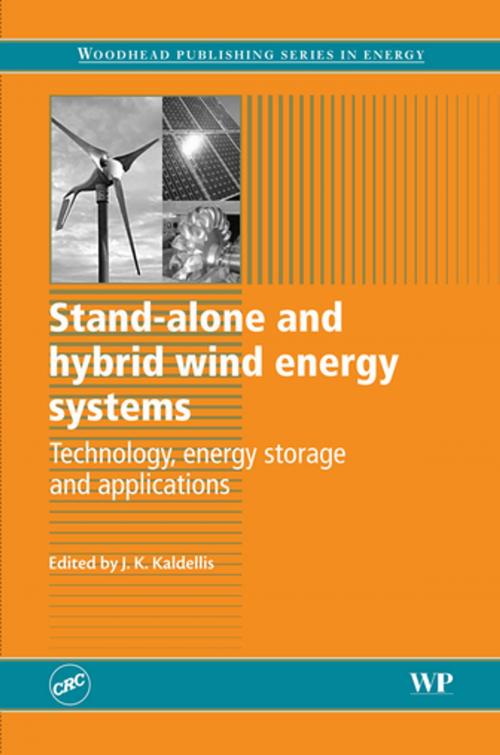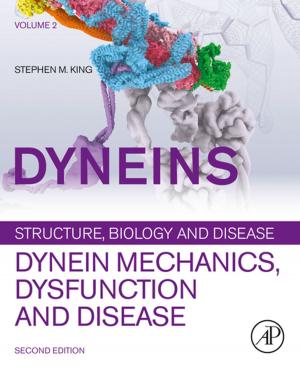Stand-Alone and Hybrid Wind Energy Systems
Technology, Energy Storage and Applications
Nonfiction, Science & Nature, Technology, Power Resources| Author: | ISBN: | 9781845699628 | |
| Publisher: | Elsevier Science | Publication: | July 27, 2010 |
| Imprint: | Woodhead Publishing | Language: | English |
| Author: | |
| ISBN: | 9781845699628 |
| Publisher: | Elsevier Science |
| Publication: | July 27, 2010 |
| Imprint: | Woodhead Publishing |
| Language: | English |
Wind power is fast becoming one of the leading renewable energy sources worldwide, not only from large scale wind farms but also from the increasing penetration of stand-alone and hybrid wind energy systems. These systems are primarily of benefit in small-scale applications, especially where there is no connection to a central electricity network, and where there are limited conventional fuel resources but available renewable energy resources. By applying appropriate planning, systems selection and sizing, including the integration of energy storage devices to mitigate variable energy generation patterns, theses systems can supply secure reliable and economic power to remote locations and distributed micro-grids.
Stand-alone and hybrid wind energy systems is a synthesis of the most recent knowledge and experience on wind-based hybrid renewable energy systems, comprehensively covering the scientific, technical and socio-economic issues involved in the application of these systems.
Part one presents an overview of the fundamental science and engineering of stand-alone and hybrid wind energy systems and energy storage technology, including design and performance optimisation methods and feasibility assessment for these systems. Part two initially reviews the design, development, operation and optimisation of stand-alone and hybrid wind energy systems – including wind-diesel, wind -photovoltaic (PV), wind-hydrogen, and wind-hydropower energy systems – before moving on to examine applicable energy storage technology, including electro-chemical, flywheel (kinetic) and compressed air energy storage technologies. Finally, Part three assesses the integration of stand-alone and hybrid wind energy systems and energy technology into remote micro-grids and buildings, and their application for desalination systems.
With its distinguished editor and international team of contributors, Stand-alone and hybrid wind energy systems is a standard reference for all renewable energy professionals, consultants, researchers and academics from post-graduate level up.
- Provides an overview of the fundamental science and engineering of stand-alone hybrid and wind energy systems, including design and performance optimisation methods
- Reviews the development and operation of stand-alone and hybrid wind energy systems
- Assesses the integration of stand-alone and hybrid wind energy systems and energy storage technology into remote micro-grids and buildings, and their application for desalination systems
Wind power is fast becoming one of the leading renewable energy sources worldwide, not only from large scale wind farms but also from the increasing penetration of stand-alone and hybrid wind energy systems. These systems are primarily of benefit in small-scale applications, especially where there is no connection to a central electricity network, and where there are limited conventional fuel resources but available renewable energy resources. By applying appropriate planning, systems selection and sizing, including the integration of energy storage devices to mitigate variable energy generation patterns, theses systems can supply secure reliable and economic power to remote locations and distributed micro-grids.
Stand-alone and hybrid wind energy systems is a synthesis of the most recent knowledge and experience on wind-based hybrid renewable energy systems, comprehensively covering the scientific, technical and socio-economic issues involved in the application of these systems.
Part one presents an overview of the fundamental science and engineering of stand-alone and hybrid wind energy systems and energy storage technology, including design and performance optimisation methods and feasibility assessment for these systems. Part two initially reviews the design, development, operation and optimisation of stand-alone and hybrid wind energy systems – including wind-diesel, wind -photovoltaic (PV), wind-hydrogen, and wind-hydropower energy systems – before moving on to examine applicable energy storage technology, including electro-chemical, flywheel (kinetic) and compressed air energy storage technologies. Finally, Part three assesses the integration of stand-alone and hybrid wind energy systems and energy technology into remote micro-grids and buildings, and their application for desalination systems.
With its distinguished editor and international team of contributors, Stand-alone and hybrid wind energy systems is a standard reference for all renewable energy professionals, consultants, researchers and academics from post-graduate level up.
- Provides an overview of the fundamental science and engineering of stand-alone hybrid and wind energy systems, including design and performance optimisation methods
- Reviews the development and operation of stand-alone and hybrid wind energy systems
- Assesses the integration of stand-alone and hybrid wind energy systems and energy storage technology into remote micro-grids and buildings, and their application for desalination systems















